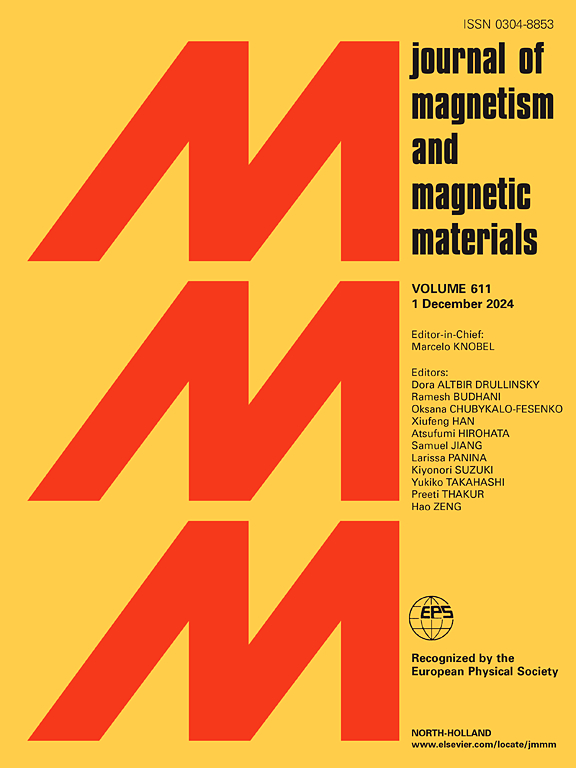Role of dextran decomposition process on the magnetite nanoparticles crystallization and magnetic hyperthermia effect
IF 2.5
3区 材料科学
Q3 MATERIALS SCIENCE, MULTIDISCIPLINARY
引用次数: 0
Abstract
Magnetite nanoparticles (MNPs) are constantly studied in various biomedical applications, including magnetically-induced hyperthermia. This study tested the role of the dextran decomposition process on the MNPs crystallization and magnetic hyperthermia effect. It was confirmed that the modification of the synthesis method (medium and the procedure of the dextran introduction) results in the synthesis of magnetite nanoparticles with an average crystallite size from 3.88 ± 1.38 to 45.97 ± 0.76 nm and different magnetic properties. It was possible to synthesize nanoparticles with superparamagnetic properties (magnetization of 54.26 emu g−1 and coercivity of 0.36 Oe) as well as a sample with a higher coercivity equal to 19.26 Oe and magnetization equal to 51.35 emu g−1. The changes in the structure, morphology, and magnetic properties reflect the applicability potential of the magnetite nanoparticles in magnetic hyperthermia. The highest effect was observed for the sample synthesized in benzyl ether in the presence of dextran 40 000. For a concentration of 0.25 mg ml−1, the specific absorption rate (SAR) was even higher than 200 W g−1. However, as shown, the SAR parameter is insufficient to analyze the applicability potential, and the temperature increase must be consequently analyzed. For a concentration of 0.25 mg ml−1, the temperature change was equal to 8.83 ± 1.03℃, while for 2 mg ml−1 to 21.20 ± 0.83 ℃.

求助全文
约1分钟内获得全文
求助全文
来源期刊

Journal of Magnetism and Magnetic Materials
物理-材料科学:综合
CiteScore
5.30
自引率
11.10%
发文量
1149
审稿时长
59 days
期刊介绍:
The Journal of Magnetism and Magnetic Materials provides an important forum for the disclosure and discussion of original contributions covering the whole spectrum of topics, from basic magnetism to the technology and applications of magnetic materials. The journal encourages greater interaction between the basic and applied sub-disciplines of magnetism with comprehensive review articles, in addition to full-length contributions. In addition, other categories of contributions are welcome, including Critical Focused issues, Current Perspectives and Outreach to the General Public.
Main Categories:
Full-length articles:
Technically original research documents that report results of value to the communities that comprise the journal audience. The link between chemical, structural and microstructural properties on the one hand and magnetic properties on the other hand are encouraged.
In addition to general topics covering all areas of magnetism and magnetic materials, the full-length articles also include three sub-sections, focusing on Nanomagnetism, Spintronics and Applications.
The sub-section on Nanomagnetism contains articles on magnetic nanoparticles, nanowires, thin films, 2D materials and other nanoscale magnetic materials and their applications.
The sub-section on Spintronics contains articles on magnetoresistance, magnetoimpedance, magneto-optical phenomena, Micro-Electro-Mechanical Systems (MEMS), and other topics related to spin current control and magneto-transport phenomena. The sub-section on Applications display papers that focus on applications of magnetic materials. The applications need to show a connection to magnetism.
Review articles:
Review articles organize, clarify, and summarize existing major works in the areas covered by the Journal and provide comprehensive citations to the full spectrum of relevant literature.
 求助内容:
求助内容: 应助结果提醒方式:
应助结果提醒方式:


